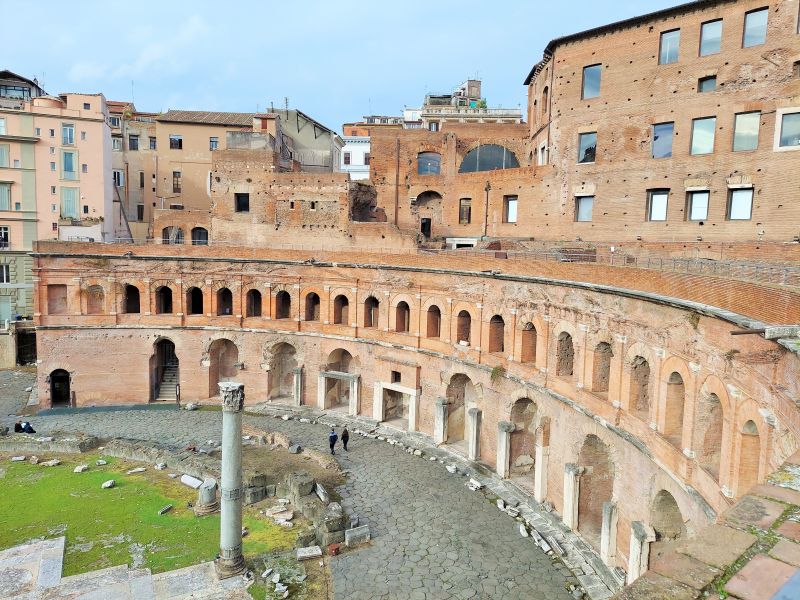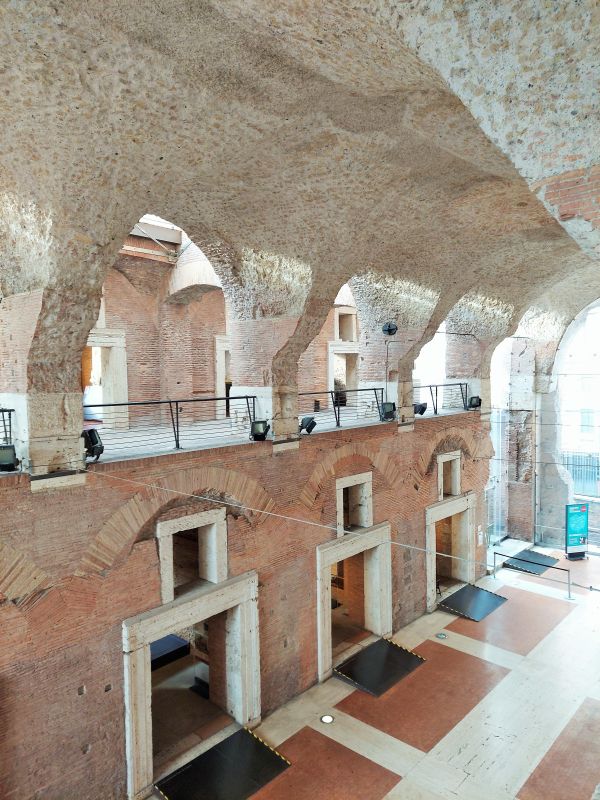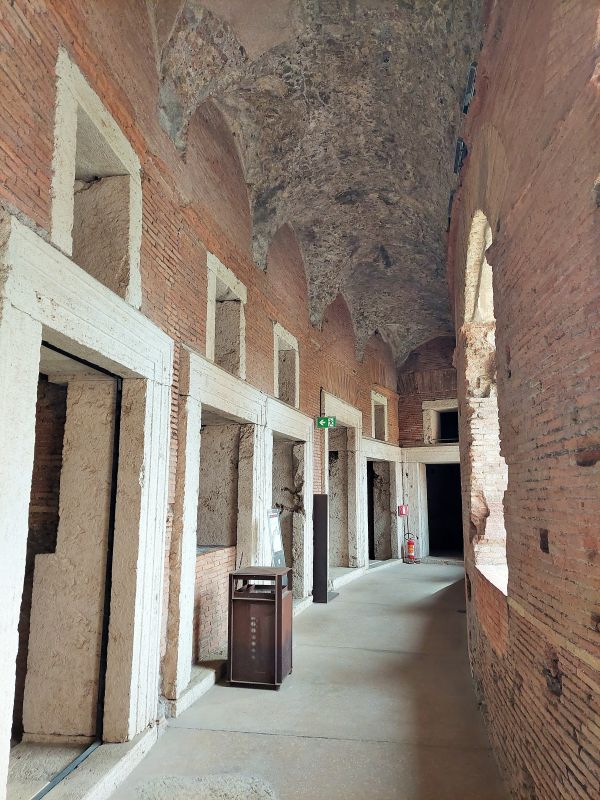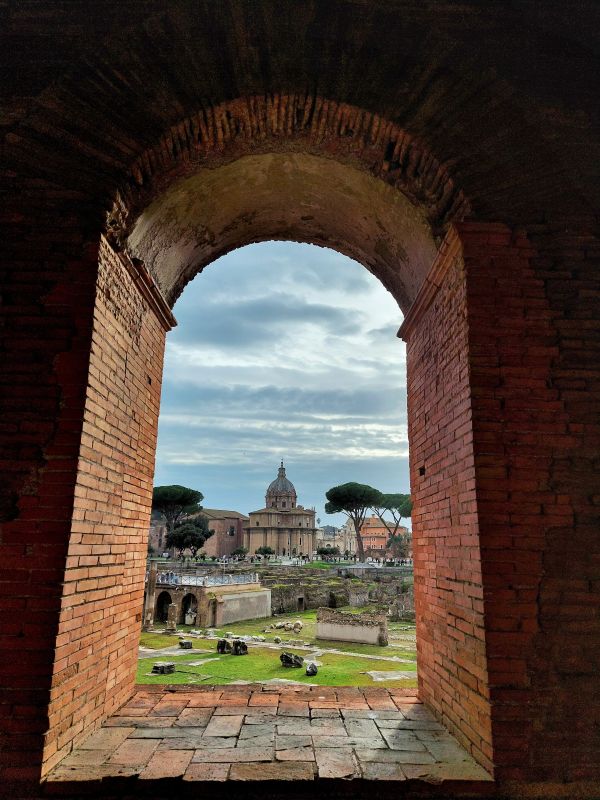History and Architecture
The Trajan’s Market (Mercati di Traiano) were built in Rome at the behest of Emperor Trajan around 112 AD. In their construction, to gain more space, part of the slope of the neighboring Quirinal was leveled. Initially, archaeologists believed it was a large, ancient commercial complex. Hence the modern name, mercato – market. However, it is now believed that the building served as the offices of Emperor Trajan’s administration.
The architecture of the Trajan’s Market was impressively advanced for its time. The centerpiece of the complex is the Great Hall, a multi-level building with rooms leading off from one central space. In addition, you can descend to the level of the Trajan’s Forum, go up to a viewing terrace, or walk along an ancient street that separated the buildings (Via Biberatica). Adjacent to the complex is the tiny Giardino delle Milizie garden, named after the Milizie tower from the 12th century, which is located there.
Discovered between 1926-1934, Trajan’s Market impress with their arrangement across a total of 6 levels and their excellent state of preservation. Currently, the interiors serve the Museum of the Imperial Fora (Forum of Caesar, Forum of Augustus, Forum of Vespasian, Forum of Nerva, Forum of Trajan). Visitors can admire numerous sculptures, ceramics, or decorative architectural elements.
Trajan’s Market – Visit
The entrance is located at Via Quattro Novembre 94. If you want to grab something quick to eat before touring, it’s worth stopping by for a slice of pizza at Grano (Via Magnanapoli 9) coming from the direction of Trajan’s Column. Tickets to the Trajan’s Market cost 13 euros (without additional exhibitions). Additionally, videoguides (available languages: English, Italian, French, Spanish, German) can be rented for 7 euros. Open daily from 9:30 am to 7:30 pm. You can confirm the current opening hours on the official museum website.
Visitors should allocate at least an hour and a half for the tour. There is no need to make a reservation in advance. Despite being located close to Rome’s most famous attractions, few tourists decide to enter. There is a souvenir shop on site.
If you are planning to visit Rome, I encourage you to read my articles on the Case Romane on the Celio hill, the Forma Urbis Museum, or Vicus Caprarius (City of Water).



